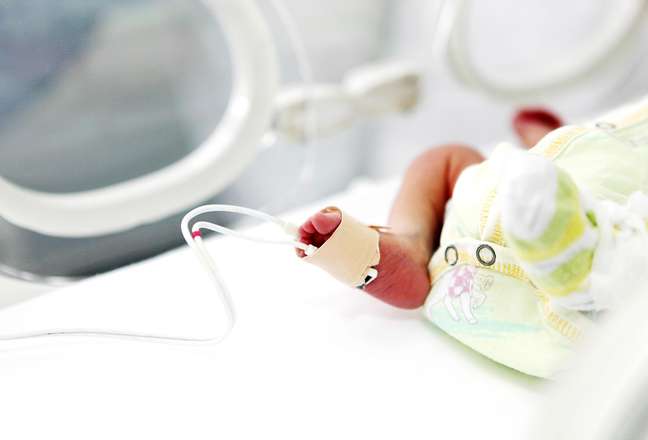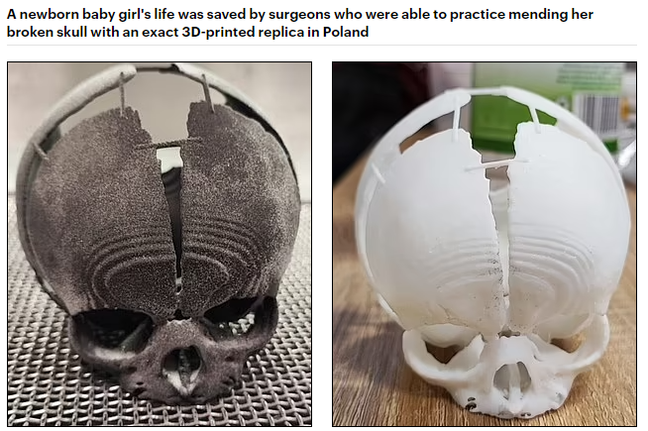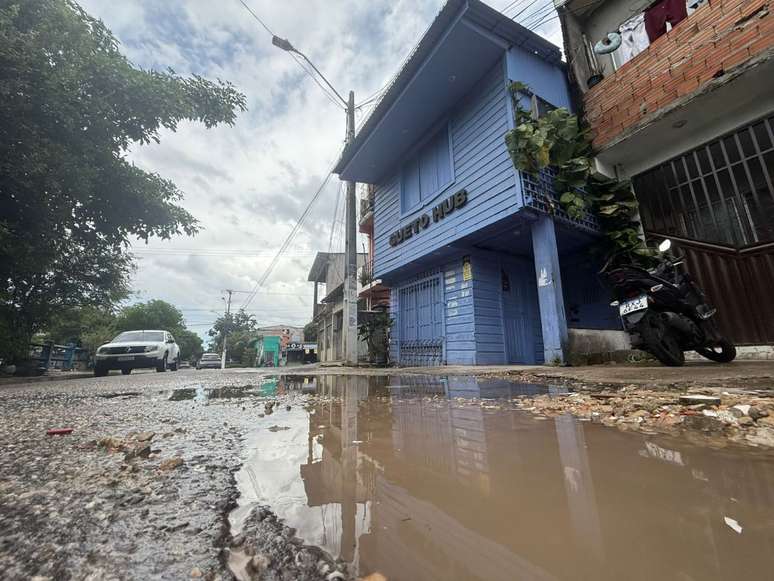The technology allowed surgeons to practice a rare and extremely delicate procedure before operating on the Polish baby.
A little girl born in the town of Rzeszow, Poland, immediately attracted the attention of the medical team to her birth by coming into the world with part of the skull is missing – problem not identified by imaging tests during pregnancy. The space, equivalent to one fifth of the cranial formation, is a rare and severe birth defect as it leaves the brain exposed.

Faced with the situation, she was transferred to the University Children’s Hospital, a specialist in pediatrics in Krakow, where the professionals set a four-day limit for the operation. The extremely delicate surgery would have had to use the skin and soft tissues of other areas of the child’s body to patch up the missing part. For this, it was essential that doctors could train and feel ready in a timely manner.
The technology, then, was fundamental: from the detailed images of the baby’s head made by tomography and magnetic resonance, The 3D printing of two skulls was carried out in the Polish capital Warsaw, which took 26 hours from start to finish. Once ready, the models were sent to the hospital and the surgeons were able to simulate the delicate procedure, identifying the problems that could occur during the operation.
Meanwhile, the baby has been kept isolated in an incubator ever since the exposed brain was a gateway to severe infections – breastfeeding was also carried out through a tube.

delicate procedure
In a two-hour surgery, the soft tissue of his skull consisted of the baby’s skin, muscles, and fat. Professor Lukasz Krakowczyk, who led the operation, told the British newspaper daily mail that, in 20 years of experience, this was the first time she had performed the procedure. “For me it was very innovative. It was missing about a fifth of the surface of the skull, so it was very large,” she said.
The case occurred in February of this year but has only now been reported. It is still known that the the child will have to undergo other treatments as her bones develop. “The little girl is waiting for another operation, this time to reconstruct the skull, but we know that her bones are growing and that is why we have to wait for this phase,” explained Krakowczyk. In the next step, 3D printing should help again, this time so that the bone reconstruction fits optimally.
Source: Terra
Benjamin Smith is a fashion journalist and author at Gossipify, known for his coverage of the latest fashion trends and industry insights. He writes about clothing, shoes, accessories, and runway shows, providing in-depth analysis and unique perspectives. He’s respected for his ability to spot emerging designers and trends, and for providing practical fashion advice to readers.



-1ibeskywkh3z8.png)




